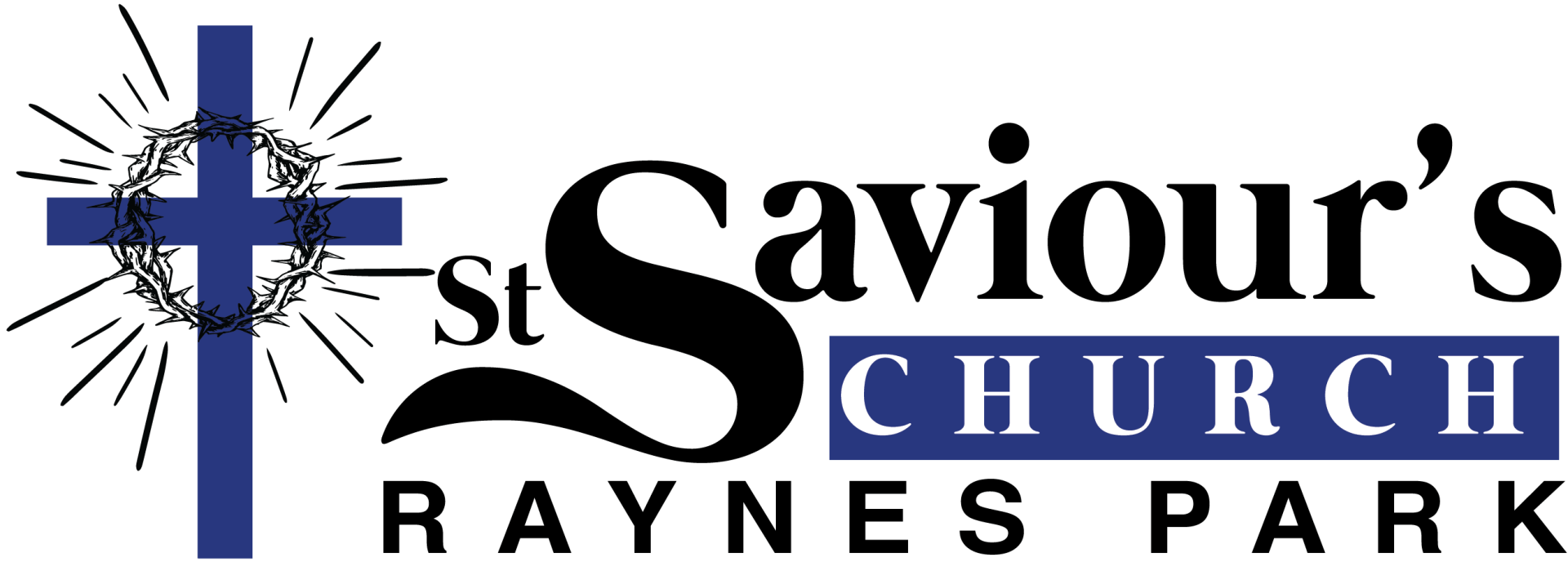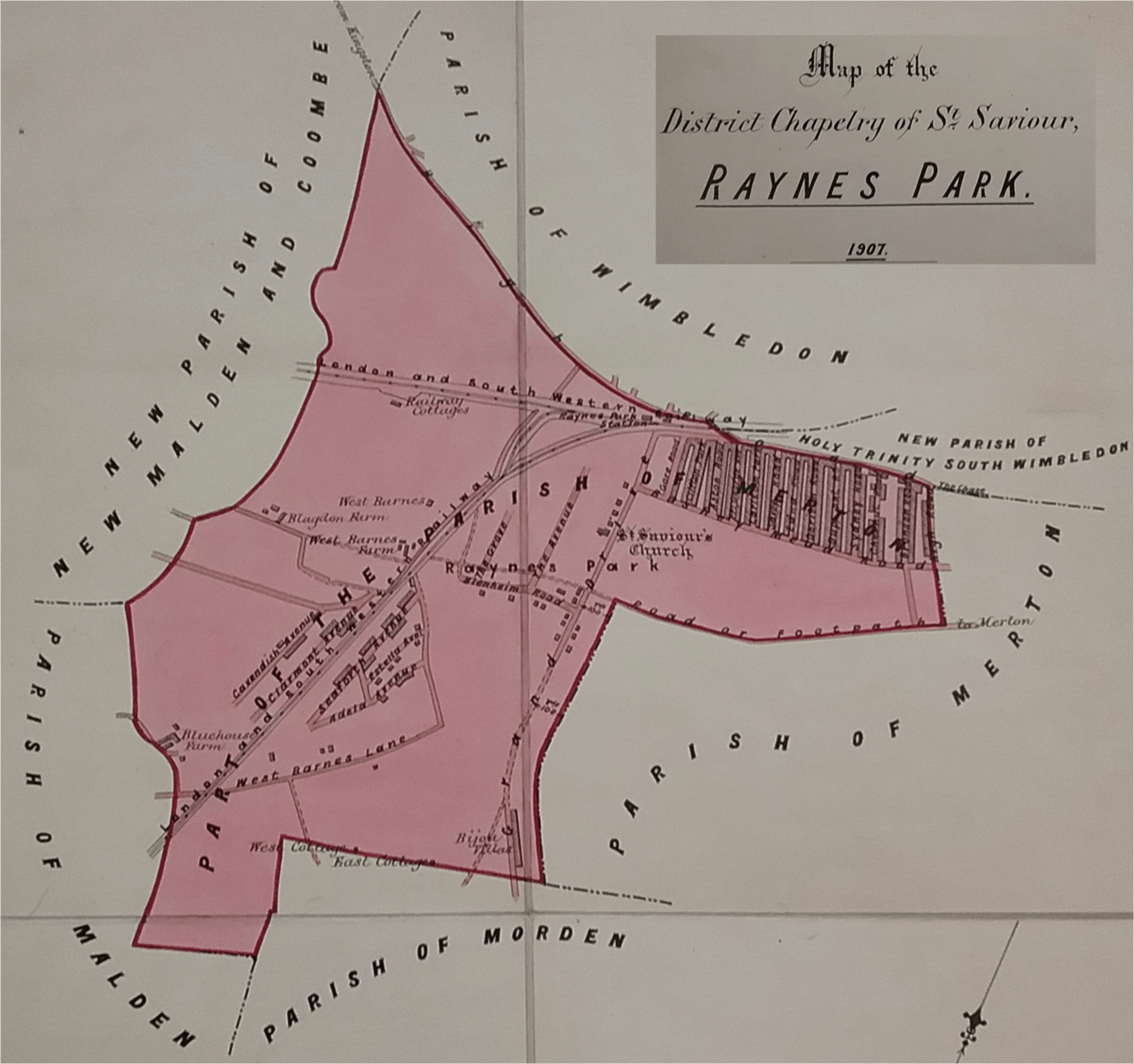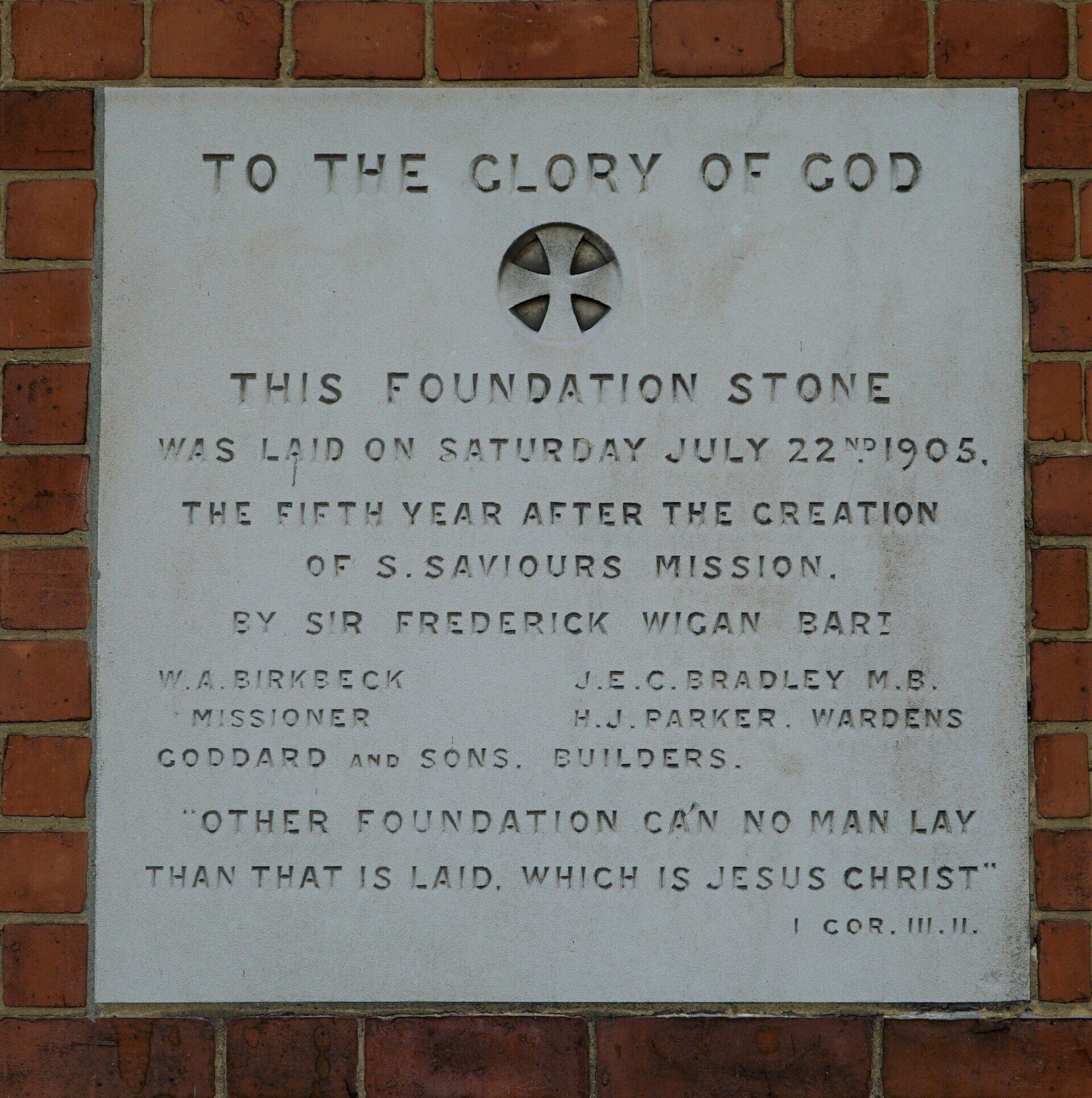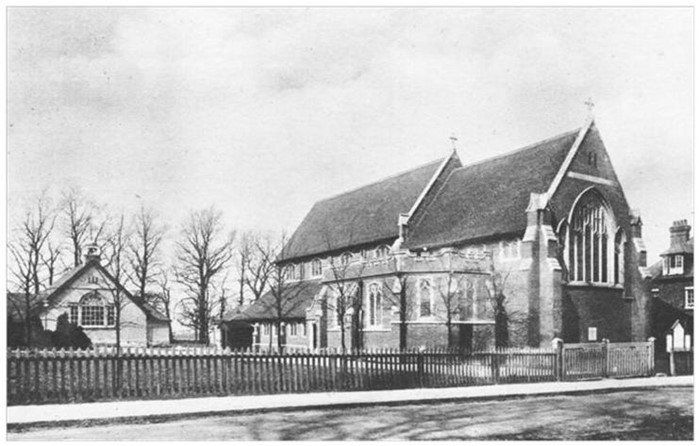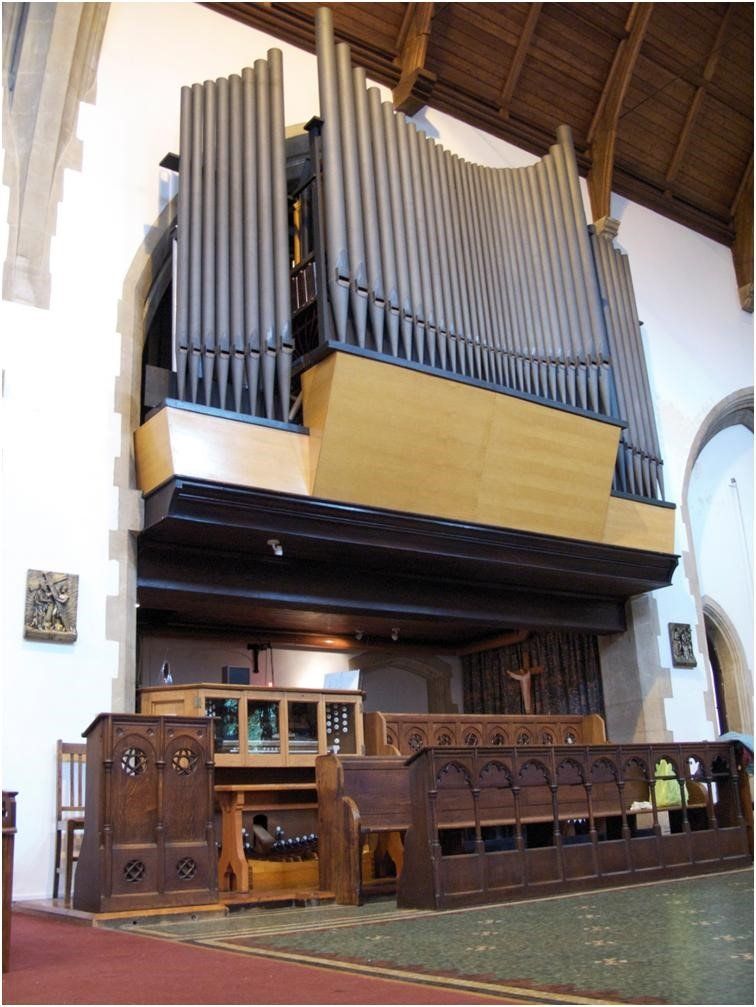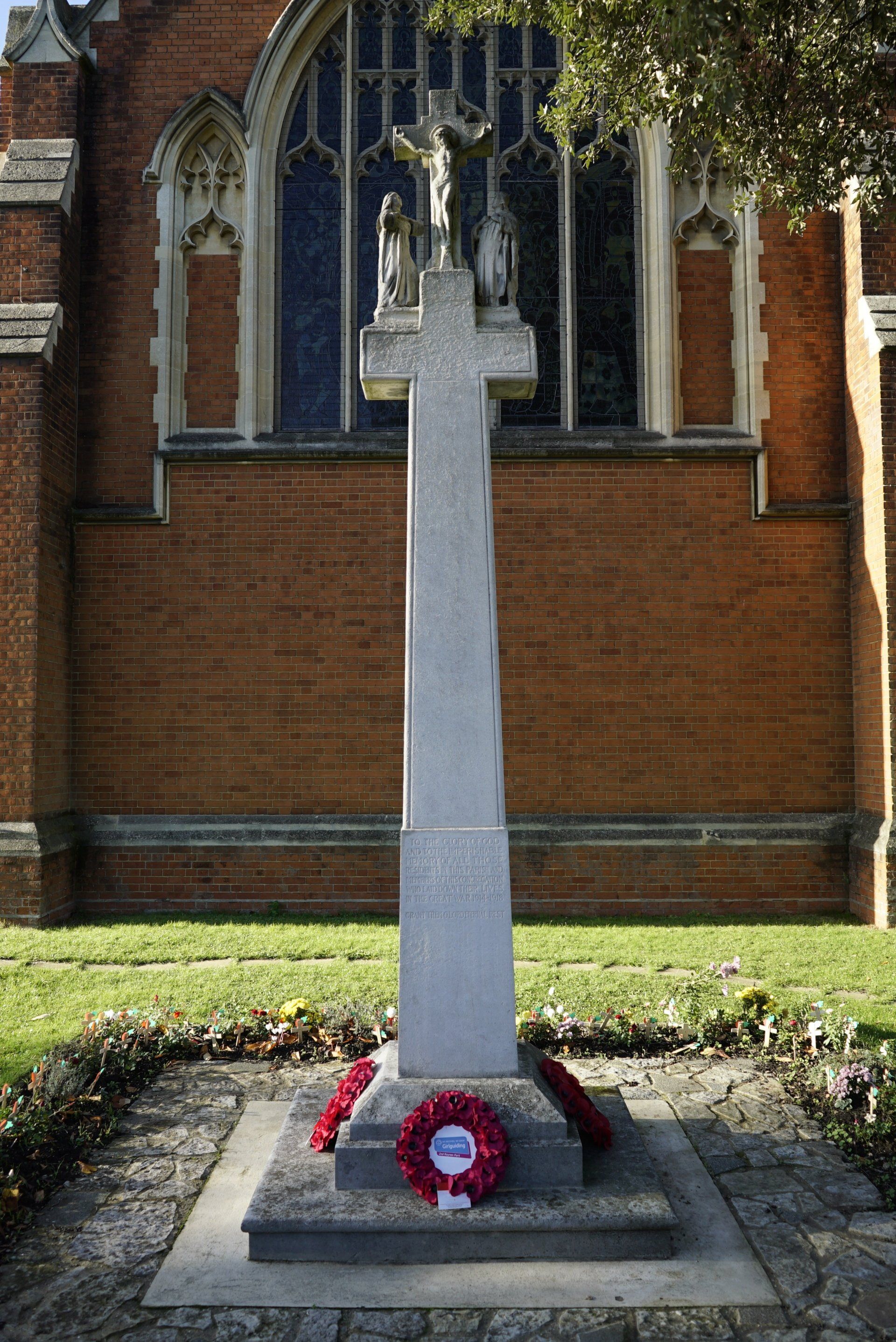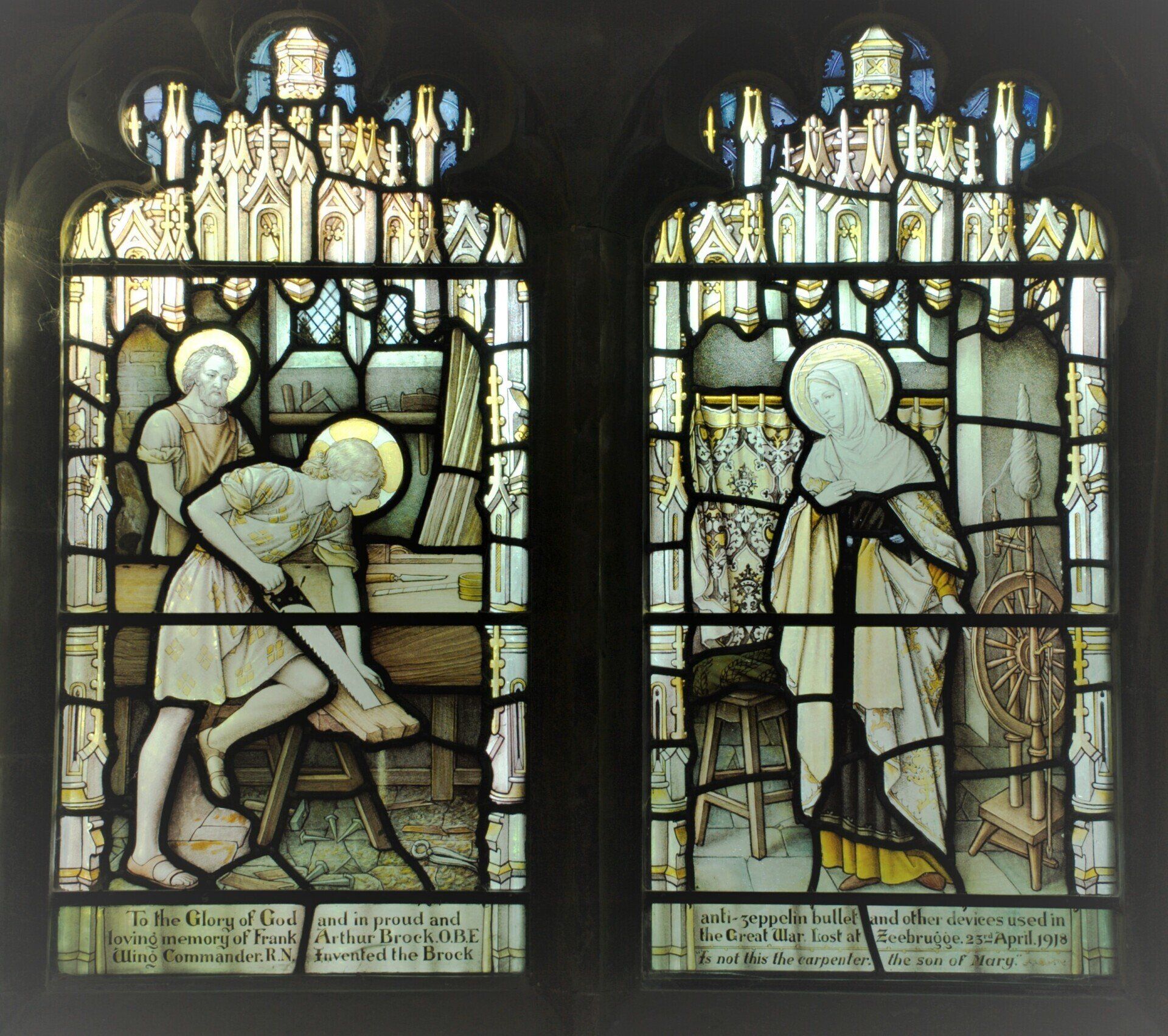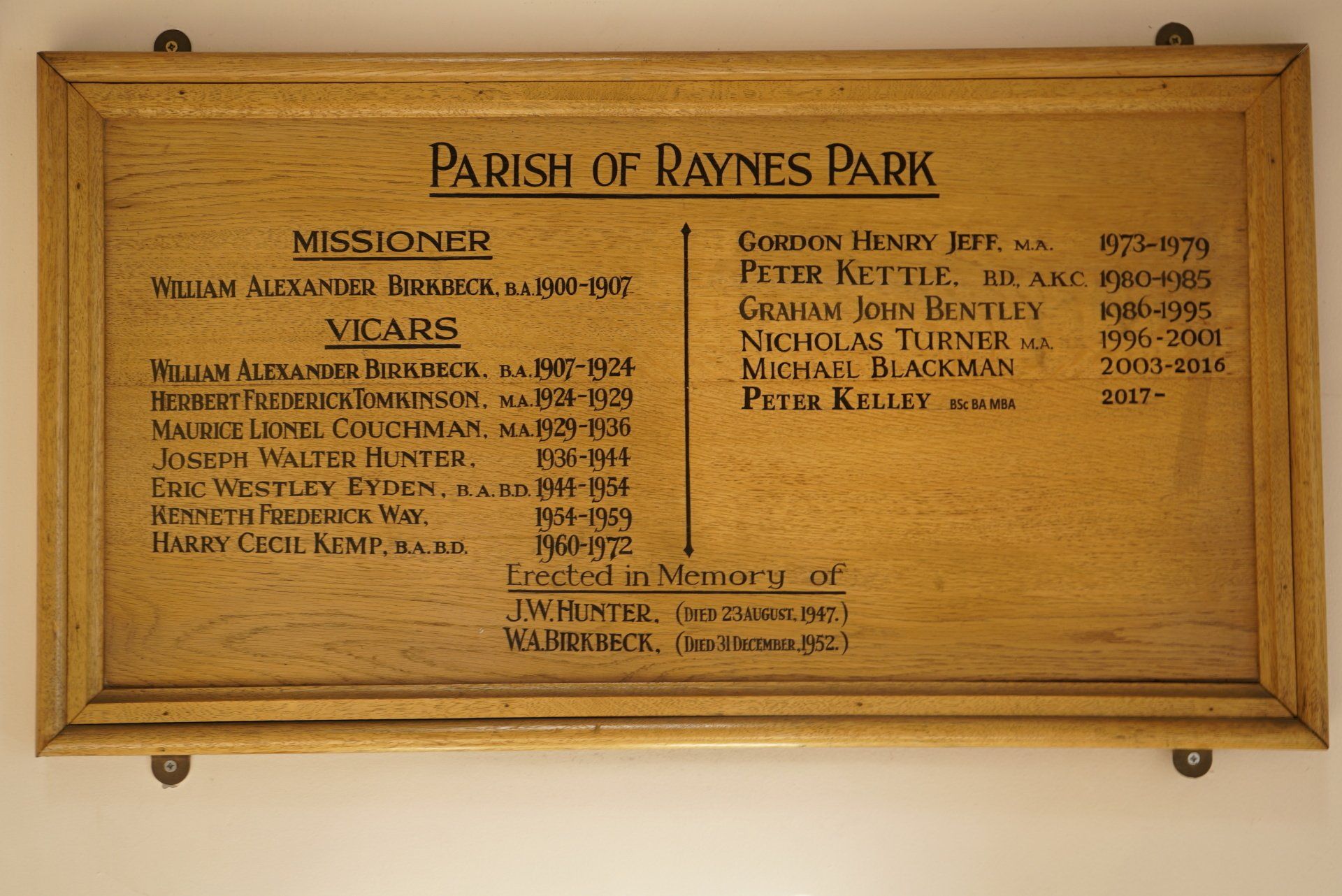History and features of St Saviour’s Church Raynes Park
The district of Raynes Park was carved out of the Parish of Merton, in the new diocese of Southwark, in 1900 and Reverend William Birkbeck was appointed Missioner for the St Saviour’s Mission.
The foundation stone for St Saviour’s church was laid in 1905 and it was consecrated in 1906.
The church was largely financed by Sir Frederick Wigan, senior partner of Wigan & Co, hop merchants in Southwark and a benefactor to many causes. His daughter married The Revd. William Birkbeck who became the first vicar of St Saviour’s when it officially became the parish church of Raynes Park in July 1908. It was the first new church to be built in the new diocese of Southwark.
It was originally planned to have a huge tower over the entrance, and an extra bay to the west, but these were dropped because the funds dried up after Sir Frederick Wigan died in early 1907.
The 13th Wimbledon (St Saviours, Raynes Park) Scout troop was founded by the Revd. Eric Eyden in September 1945, although records show the Scout group had existed in November 1914 before folding and remerging in 1920 and then again in 1924 to 1929.
Revd. Eyden was also responsible for launching a Guide company in 1946 and Cub and Brownie packs in 1947. The Scout group and Guide company survive to this day and have actively supported activities of the church over the years including playing a significant role in the restoration of the War Memorial.
In 1989, the sale of the land at the west end of the church, which included the original church hall and a corrugated iron clad hut that had been used for church services while the church was being built, provided funds to convert the west end of the church into a new church hall, upper room and entrance and narthex with a kitchen and storage cupboards to be built alongside the north wall.
In 1994, the PCC resolved not to accept a woman priest or a woman incumbent. In 2016, this resolution was rescinded.
Since its consecration in 1906, St Saviour’s has had thirteen incumbents.
Features of the church
The Lady Chapel was added to the southern flank of the church and consecrated in 1909 to the memory of Sir Frederick Wigan, who had died in 1907. He was the main benefactor of St Saviour’s and is remembered in three stained glass windows in the north wall of the church as well as a brass plate and a stone plaque in the Lady Chapel. The hop details on the altar and some brass works are perhaps explained by his being a leading hop merchant in Southwark. Four of his children are also commemorated or mentioned in other windows.
Wing Commander Frank Brock OBE is commemorated in a stained-glass window in the South wall. He invented the Brook anti-Zeppelin bullet and other devices that probably changed the course of the First World War. He was killed in action at Zeebrugge in 1918. The story of his remarkable life is told in the book Gunpowder & Glory (pb. 2020) co-authored by his grandson, Harry Smee.
The pipe organ installed in 1907, was built by one of the leading organ builders of the day, William Hill and Sons, and is still used for services and organ recitals.
The Raynes Park War Memorial bears the names of 97 men from Raynes Park who died as a consequence of the First World War. It was designed by Thomas Mewburn Crook with lettering by Graily Hewitt, both leading artisans of their day. It was unveiled on 20th November 1921. The Memorial was restored following a fundraising campaign launched in 2018 and rededicated on 20th November 2021, exactly 100 years after its original unveiling.
A Book of Remembrance is held in the north chapel, commemorating the departed as requested by mourners and all those recorded on the Raynes Park War Memorial that stands to the east of the building.
The Rood Cross that hangs over the transept was bought by parishioners in 1960 following a pilgrimage to Oberammergau.
A detailed history of St Saviour’s Church can be downloaded
here.
